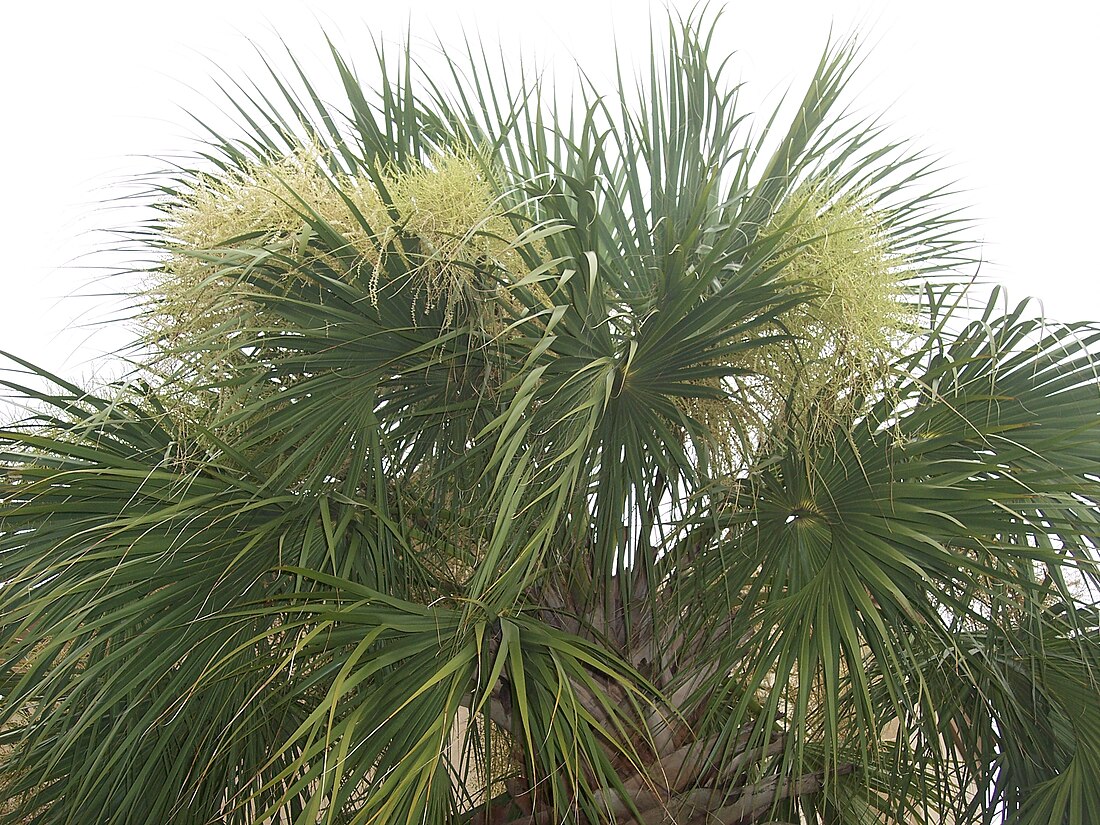Top Qs
Timeline
Chat
Perspective
Coryphoideae
Subfamily of palms From Wikipedia, the free encyclopedia
Remove ads
The Coryphoideae is one of five subfamilies in the palm family, Arecaceae.[2][3][4] It contains all of the genera with palmate leaves, excepting Mauritia, Mauritiella and Lepidocaryum, all of subfamily Calamoideae, tribe Lepidocaryeae, subtribe Mauritiinae.[5][4][3] However, all Coryphoid palm leaves have induplicate (V-shaped) leaf folds (excepting Guihaia), while Calamoid palms have reduplicate (inverted V-shaped) leaf folds.[4] Pinnate leaves do occur in Coryphoideae, in Phoenix, Arenga, Wallichia and bipinnate in Caryota.
Coryphoids are well-represented in the fossil record from the Late Cretaceous (Campanian) onwards, primarily due to the presence of the form genus Sabalites.[6]
Remove ads
Classification
Summarize
Perspective

Subfamily Coryphoideae is divided into 8 tribes:[3]
The genus Sabinaria was discovered and described after the classification used here[3][4] was published, but its morphology clearly places it in tribe Cryosophileae.[7] The genus Saribus was split from Livistona,[8] while Lanonia was split from Licuala,[9] also after publication. Tribe Trachycarpeae was initially described as tribe 'Livistoneae',[3] but the name Trachycarpeae has priority.[4] Also Uhlia is an extinct genus described from permineralized remains recovered from the Ypresian Princeton Chert in British Columbia, Canada.[10]
Remove ads
References
External links
Wikiwand - on
Seamless Wikipedia browsing. On steroids.
Remove ads

